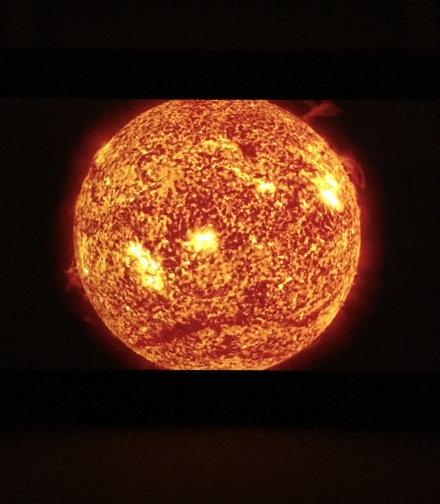
Arthur Jafa, Love is the Message, The Message is Death (2016), via Art Observed
Arthur Jafa’s current video installation, on view at Gavin Brown’s Enterprise in west Harlem, is at once joyous and tragic, celebratory and rebellious. Bearing the title Love is the Message, the Message is Death, it makes reference not only to Philadelphia act MFSB’s classic disco tune “Love Is The Message,” but also to “Love is the Plan and the Plan is Death,” a short story by Alice Sheldon, better known by her pen name of James Tiptree Jr., or Raccoona Sheldon. The work, played alongside Kanye West’s caustic and meditative “Ultralight Beam,” from his latest album, presents a fusion of images, music, and theory, ultimately presenting a striking vision of the black experience in the 21st Century.
A film director, cinematographer, visual artist, lecturer, and writer, Jafa has long attempted to preserve and celebrate black culture. Through an amalgamation of found footage, Jafa draws attention to the systemic brutality African-Americans are subjected to daily, while highlighting the their collective triumphs. The installation draws together fragmented footage to create a sum greater than its parts, each time drawing on its soundtrack to present kaleidoscopic and historically intertwined visions of histories of race, racism, and violence in America.
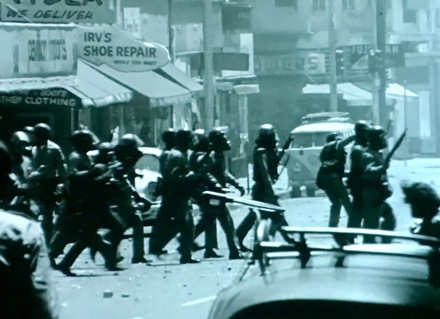
Arthur Jafa, Love is the Message, The Message is Death (2016), via Art Observed
The splicing of images throughout the work makes evident a theme of violence and oppression, a thread that manages to convey sensations of force and trauma throughout the piece. Jafa places footage of the many incidences of police brutality and other forms of persecution, often shown alongside historical footage of civil rights era marches, using these images to make evident both the violence itself and its existence within a pattern of recurring events.
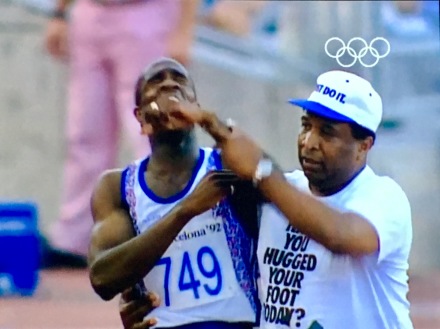
Arthur Jafa, Love is the Message, The Message is Death (2016), via Art Observed
However, the very creation of Love is the Message, the Message is Death serves as an attempt to in some way disrupt this pattern. The piece is in many ways a celebration, both of the commonplace in black culture and of more recognizable triumphs. In particular, the work exhibits several clips of African American men and women walking along a city street, demonstrating the difficulty in even the simplest acts. It is an allusion to a march, it is a continued resistance through the act of persistence.
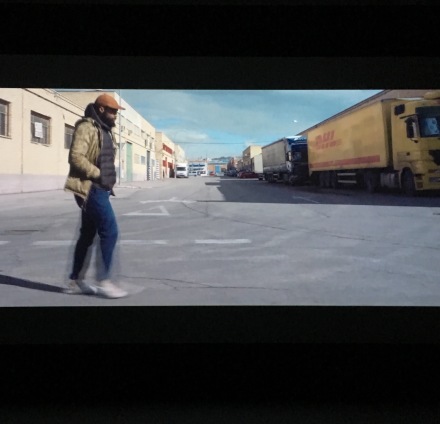
Arthur Jafa, Love is the Message, The Message is Death (2016), via Art Observed
Ultimately, the piece focuses on movement and action in order to present a celebration and reclamation of the black body from violence itself. Much of this takes the form of dance. The work displays crowds performing recent dance crazes, couples dancing, and musical artists performing, playing again on iconographies of joy even in the face of the violence surrounding these images. Similarly, the work traces a history of African-American athletes, from Muhammad Ali to Serena Williams, triumphant images that forcefully counter the dehumanization that the black body.
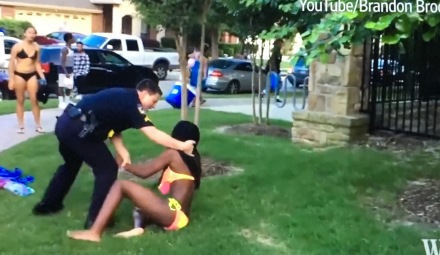
Arthur Jafa, Love is the Message, The Message is Death (2016), via Art Observed
This theme is further elevated by the addition of the political. Jafa includes clips of a variety of speeches, by leaders such as Martin Luther King Jr. and Barack Obama, using allusions to power, intellect, and change to echo and underscore alternatives to oppression. However, their juxtaposition with various aggressors also speaks to the tragedy of the film. Despite the quantity of empowering idols to look to as well as the resilience of the individual, the struggles faced by black Americans have not diminished.

Arthur Jafa, Love is the Message, The Message is Death (2016), via Art Observed
Resembling a mosaic in its movement and spirit, Jafa’s Love is the Message, the Message is Death attempts to retake the essence of black culture that has been so brutally abused.
—M. Donovan
Read more:
Arthur Jafa at Gavin Brown Enterprise [Exhibition Site]



